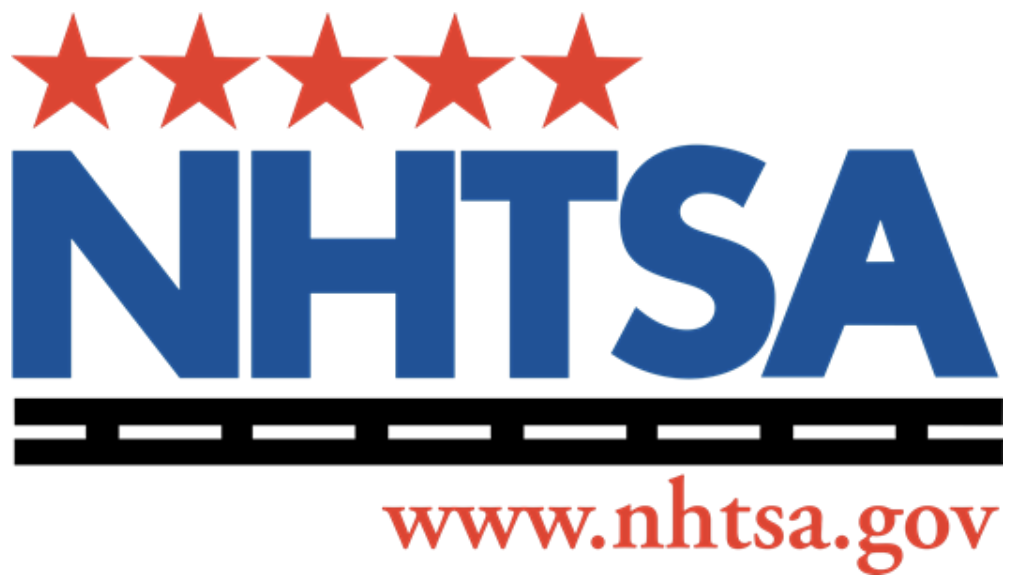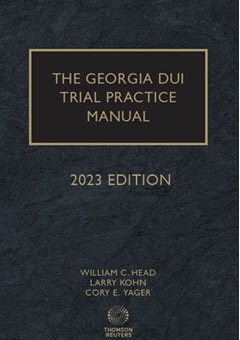NHTSA Standardized Field Sobriety Tests: Voluntary or Not?
By: Board-Certified DUI Attorney William C. Head, legal book co-author and expert on Georgia DUI laws
Three (3) standardized field sobriety tests are used in the United States as roadside evaluations for a DUI-alcohol suspect to be detained at a police encounter. These police alcohol test intoxication evaluations (the HGN test, the walk-and-turn test, and the one-leg stand test) were the product of two controlled studies funded by the federal government, occurring in 1977 and 1981.

Officers using the protocols to identify alcohol intoxication through these drunk test screenings were told to arrest when a certain number of "clues" were observed. One of the important (but often omitted steps) was to ask the detained person if he or she "understands the instructions." If an officer also had a battery-powered portable breath alcohol tester, she or he was told to administer that evaluation LAST.
If the general public understood how standardized field sobriety test clues are "graded," no one suspected of operating under the influence (OUI) would be dumb enough to attempt these DUI test evaluations. The correlation between these so-called signs of intoxication and driving impairment is highly suspect.
The Three Approved NHSTA Field Tests: The HGN, WAT, and OLS
In the final report, only three evaluations had anything close to being a better option than flipping a coin. The HGN test was the "most reliable" evaluation when conducted correctly and with full instructions, according to NHTSA.

Officers administering it are looking for involuntary jerking of the person's eye, side-to-side. It is important to note that lateral gaze nystagmus is also a MEDICAL test that is so complicated that registered nurses are not permitted to administer it. Yet, police personnel with cursory training are doing this on a daily basis.
The other two roadside evaluations are "divided attention" tests, meaning that you must listen to a list of instructions, remember them, and then execute the evaluation. For the walk-and-turn test, a person is instructed by a policeman or policewoman to follow their commands.
These instructions include demonstrating the "steps" by partially mimicking the method of doing each "test." Plus, the officer must give full instructions to the suspected impaired driver.
These instructions, however, tell the person to stand in an abnormal and awkward starting position and hold that unnatural stance for thirty seconds or more while instructions and a demonstration are performed by the cop.
In general, the test subject is to walk in a heel-to-toe manner, with his or her arms clasped closely to their sides, on a straight line (real or imaginary). Then, without pausing, the person is told to make a counterclockwise turn using small steps.
While walking heel-to-toe again in the opposite direction, but staying on that same straight line, coming back down the same line, with the heel touching the toe of the other foot on each step, without the person raising her or his arms more than 6" from their sides.
This exercise has over 76 possible places that an error can be made, and two mistakes is "failing." Many people make the two errors while trying to maintain the unnatural stance. Translated into typical school grade "scoring," 97.3% and LOWER is failing.
The one-leg stand test calls for another "instructional" position, which entails putting your arms to your side, and your feet together. Once told to begin, the subject is NOT to raise his or her arms and raise either foot 6 inches off the ground while pointing the toe forward, with the sole of the shoe parallel to the ground.
The subject must not raise either hand more than 6 inches away from their side, and to look at the toe of their raised foot, and to count out loud in this manner, "one thousand one, one thousand two…" and NOT bend either knee. If you saw a person standing like this at a social function, it would be bizarre.
This exercise has over 122 possible places that an error can be made and (again) just two improper actions is the "failing" grade. Like the WAT test, a substantial number of people make one or two errors (e.g., starting too soon) while trying to maintain the unnatural stance. Translated into typical school grade "scoring," 98.4% and LOWER is a failing grade.
In America, all Wise Motorists Drivers Should Refuse the Standardized Field Sobriety Tests but Submit to the Official DUI Testing
Are the Drunk Driving Tests Accurate? A final study paid for by the National Highway Traffic Safety Administration (N.H.T.S.A.) in 1983 set the groundwork for NHTSA to claim that "research" proved the reliability pf the 3 roadside sobriety tests. Multiple medical doctor conclusions and scientific studies have refuted those bold, unsupported claims about being able to reliably identify a drunk driver.
In 1984, the initial "directives" for gathering field sobriety test "clues" were printed and mailed out to law enforcement agencies, with no peer review being done to verify the Government's claims. From the first to the last manual, the Government claims that the field sobriety eye test is the most accurate, yet 95% of officers either do it incorrectly or don't cover all the needed screening questions and instructions for how to track the stimulus.
The field sobriety test vs breathalyzer dilemma. The government wanted to establish some field sobriety test guidelines, by which officers would have simple, quick, and safe "screening" tests to help officers make valid arrest decisions.
Other nations, like France, Australia, and Italy, use hand-held portable alcohol breathalyzers to gauge who gets arrested. In fact, in most nations, those who refuse these chemical tests to screen them on such scientific, calibrated devices are to be taken to jail for drinking and driving.
Because adults aged 21 and older in ALL STATES can drink some alcohol and drive, a DUI field sobriety test done at the highway made sense, to law enforcement officials. The accuracy of field sobriety tests, however, was of prime importance. Plus, in America, not taking field sobriety tests is the right of every driver in every state, although some states now will assess a monetary penalty from refusing to blow into a "voluntary" PBT (preliminary breath test) device.
The original effort to identify usable roadside evaluations had more than ten prospective tests, but only three were chosen for law enforcement use. The ten initial police roadside tests the government considered had people recite the alphabet, walk a straight line, and pick up several coins (in a certain order) that an officer tossed on the ground, and tracing tests. The goal was to help make better arrest decisions for the offense of driving under the influence.
All field sobriety test manuals call for "2 clues" (or " two cues" as the original studies named them) being an "arrest decision." For the walk & turn test, that is equivalent to a grade of 97% correct, yet failing.
Dr. Marcelline Burns and her new company, the Southern California Research Institute, oversaw (and was paid large sums of federal money) these reports to give a "scientific" aura to these police tests. In fact, on multiple other "studies" and reports for police agility and psychomotor tests, Dr. Burns managed to "land" ALL the big federal contracts.

Real medical doctors and scientists call the tests, "a fraud upon the motoring public." who knows (not "guesses") they are not drunk might take it. If a low numeric reading is displayed this accused drunk driver may be able to later use this low number as favorable evidence in court. Patrick v. State, 295 Ark. 473 (1988). This possible defense is one of hundreds of ways to beat a DUI case.
The walk and turn test, one leg-stand test and horizontal gaze nystagmus test. The latest SFST version (of nearly a dozen updated Participant Manuals) was released in 2023. The three "standardized" tests are the horizontal gaze nystagmus eye (HGN) test, WAT (walk and turn) and OLS (one-leg stand).

Is field sobriety test refusal admissible against a person in Court? Not in some states. Oregon and Massachusetts along with Georgia have favorable "search and seizure" laws that don't allow such refusals of voluntary tests to be used against a suspected impaired driver.
In 2022, the Supreme Court of Georgia ruled in Ammons v. State that the driver suspected of DUI could refuse to take part in voluntary roadside tests, such as a preliminary breath test or field sobriety tests. In the Peach State, this is guaranteed under any suspected DUI driver's Georgia constitutional rights.
For defense an accusation of DUI in Georgia, call us 24 HOURS A DAY for a FREE lawyer consultation and ask about our attorneys' fee payment plans. 404-567-5515.
Additional Links related to this Article
The History of Government efforts to Bolster these Field Tests
 Kohn & Yager Home
Kohn & Yager Home










